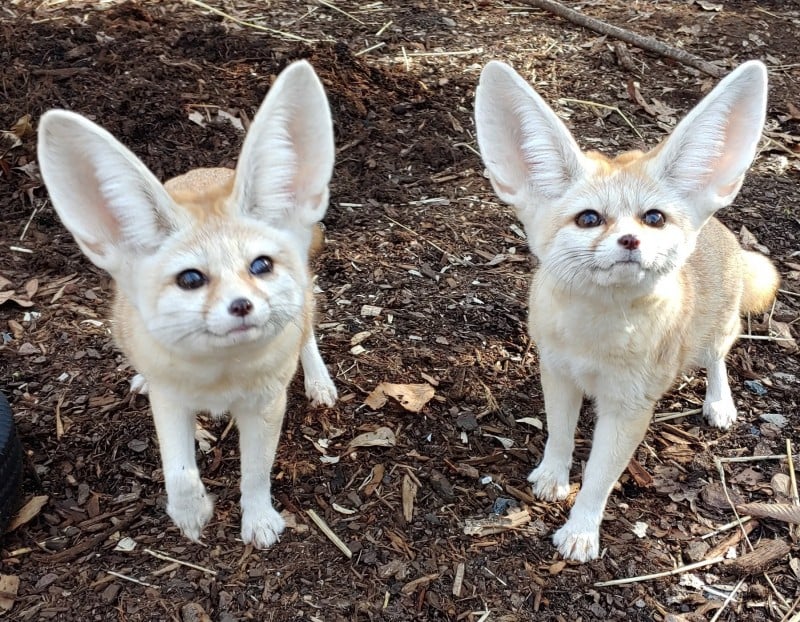
About Desert-fox.us
This company does not currently have a business account, if you are the owner of the company, you can open a business account immediately.
Site Information
Is this your company?
Claim your profile to access Trustedreviews free business tools and start getting closer to your customers today!
About TrustedReviews
We Fight Fake Reviews
Here’s how you can flag problematic reviews.
We improve experiences
Here's our commitment to you.
We encourage quality customer feedback
We are check comments and we care about data reliability
Business Transparency
Claiming a profile allows the company to do things like reply to reviews, invite customers to write reviews,
Dear users; You can find all kinds of information about TrustedReviews in the faq section.
A fennec fox requires a large outside area for freedom and exercise. These foxes are nocturnal and use their large ears to dissipate heat, listen for underground prey, and regulate body temperature.
Their tiny bodies survive the searing temperatures of desert environments in North Africa and the Arabian Peninsula. But climate change, road construction, and solar energy development are threatening their habitats.
The fennec fox (Vulpes zerda) is a small fox native to North Africa. It is the smallest of all fox species and is well-adapted to desert habitats with high temperatures, little water, and sandy landscapes. Its ear size and shape help it locate underground prey, while its skin helps to dissipate heat during hot days.
Nocturnal hunters, fennecs hunt for rodents, reptiles, insects, snails, bird eggs, and plants at night. Their large ears provide impeccable hearing, allowing them to hear their prey underground. They also consume a variety of seeds, roots, fruits, and vegetables to gain enough hydration in the desert.
Fennec foxes are monogamous and reproduce every year with 2 to 4 kits per litter. These families will dig out burrows in the sand, often with multiple entrances and exits for protection from outside threats. In captivity, fennecs are typically fed a canine kibble and carnivore meat diet with vegetables and fruit as enrichment items.
The kit fox is an elusive animal that lives on desert grassland and creosote bush flats, and under the sand dunes. It is almost exclusively carnivorous and never drinks water—it gets all it needs from the food it eats. Its primary threat is habitat loss. Defenders of Wildlife works tirelessly in California to save native rangeland, including the habitat needed by this cute little critter.
In the wild, it breeds in the winter and has a maximum lifespan of eight years. Females begin searching for a birthing den in September and October, visiting many to ensure a suitable one.
Kit foxes live in the southwestern United States and parts of Mexico. They prefer arid and semi-arid regions, including desert scrub, chaparral, and sandsage/gravel prairie. They avoid areas with slopes greater than 5%. Their light sandy color, dense fur between paw pads for traction on loose sand and tail that changes color with the season are all adaptations to help them camouflage in the desert.
When you are hiking in the desert and look up to see a little dog trotting through the creosote bushes, chances are it’s one of our own desert kit foxes (Urocyon cinereoargenteus).
These little foxes have long ears that stick out like horns. They can run up to 28 mph and have a rusty-red coloration around their faces.
They are primarily nocturnal hunters, and their food includes small mammals, birds, insects, acorns and berries. They can climb trees with ease, and their tree dens are often 30 ft or more above ground.
They typically breed once a year, with litters of 3-5 pups born in February or March. Pups are blind and helpless at birth, with short dark fur. They remain with their parents until autumn, when they begin to hunt on their own, and then they disperse. These foxes can live up to 10 years in captivity, but their longevity in the wild is probably much shorter.
Arizona's deserts are famous for their wildflower displays. Each winter and spring, a few well-spaced rainstorms can trigger massive carpets of color in cacti, shrubs, and wildflowers. It's best to check local parks and visitor centers for the latest bloom status before heading out, and remember to stay on designated trails to avoid trampling the delicate desert ecosystem.
During good years, the Sonoran Desert is blanketed by yellow-orange flowers of fairy duster (Baileya multiradiata). A few soaking rainstorms can also wash the protective coating off desert annuals such as Eschscholtzia mexicana and lupine and bring them into bloom.
The desert landscape is dotted with perennials such as Blackfoot daisy (Anionica semperflorens-cum-folia) and desert marigold. Herbaceous shrubs such as trailing four-o'clock (Allionia incarnata) and Coulter hibiscus (Hibiscus coulteri) flower opportunistically, especially during wet summers. The golden hedgehog cactus (Hesperocheilus giganteus) produces pink blossoms in mid-March during banner years. Other perennials to look for include sagebrush, desert globemallow, purple sand verbena, and yellow brittlebush.
